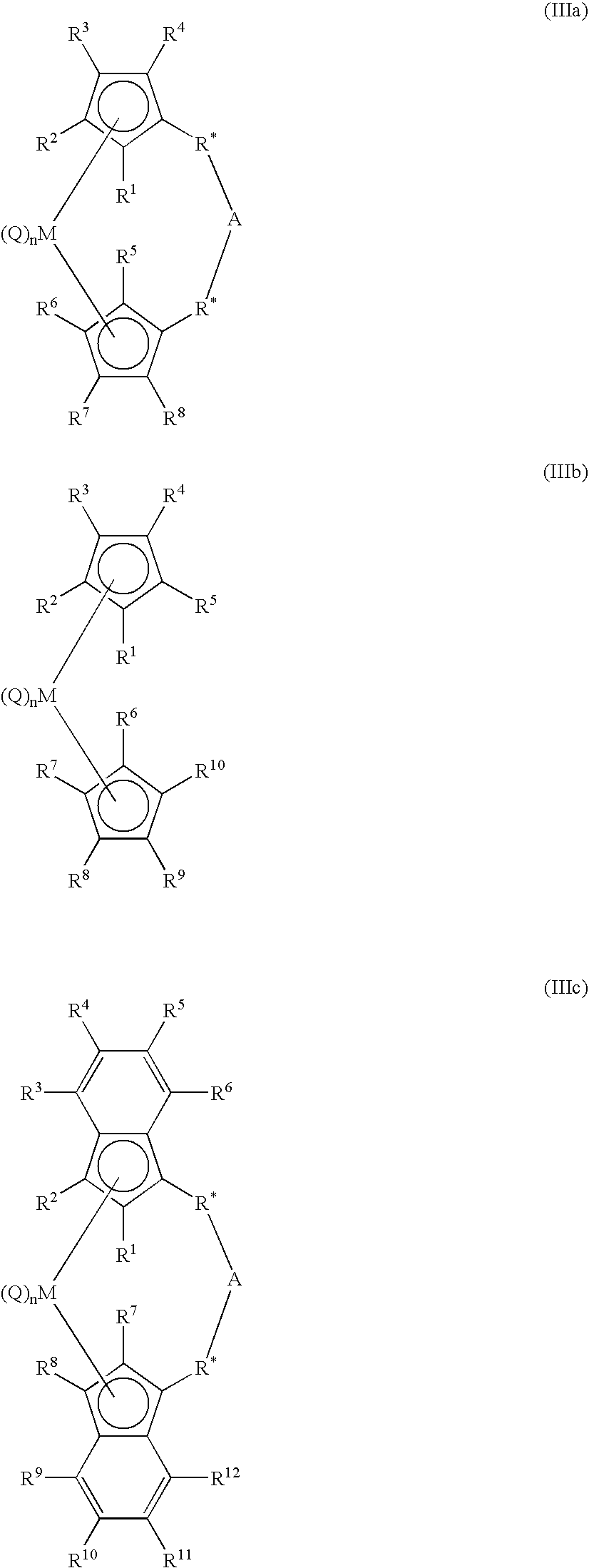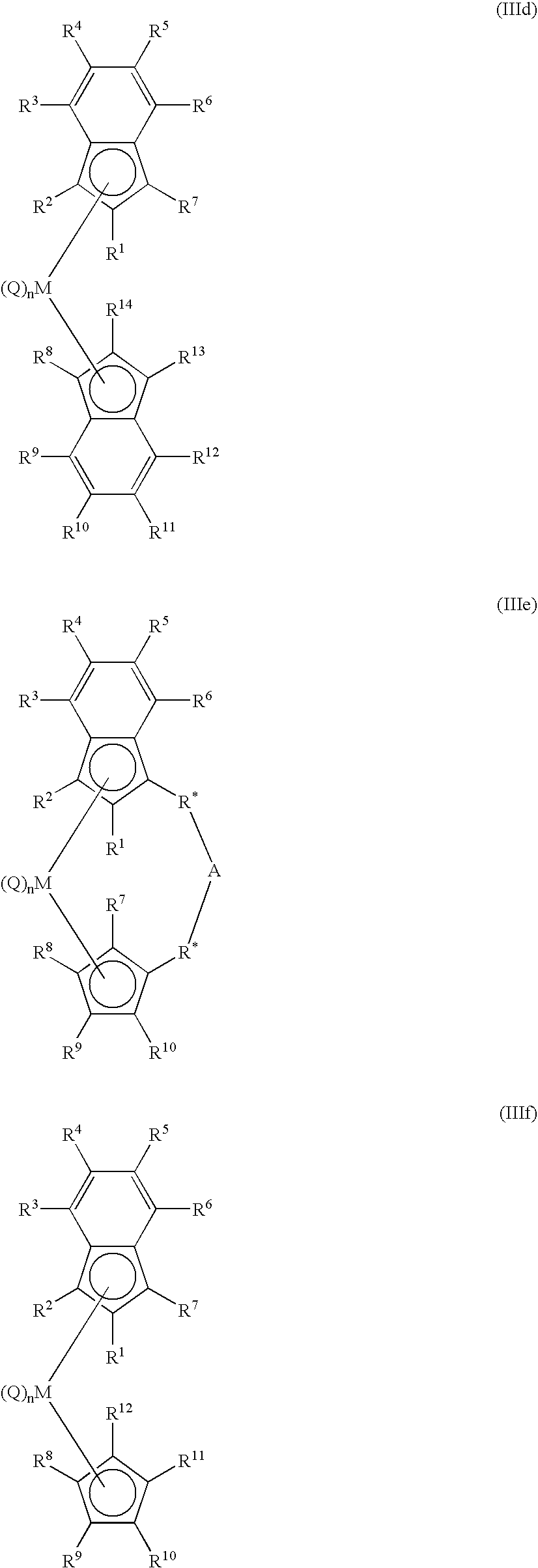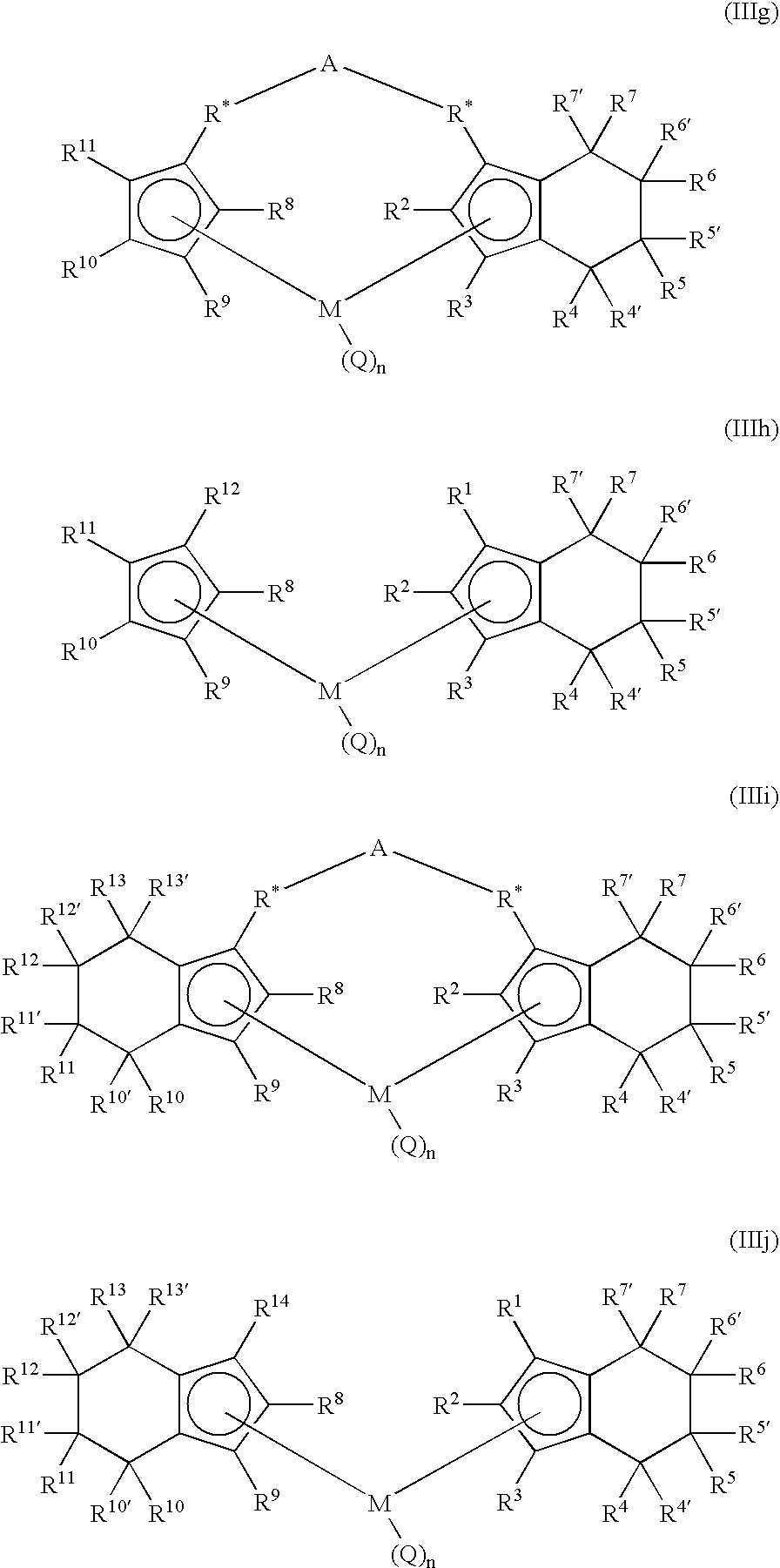Polymerization process using a metallocene catalyst system
a metallocene catalyst and polymerization process technology, applied in the direction of catalyst activation/preparation, physical/chemical process catalysts, chemical/physical processes, etc., can solve the problems of increasing cost and complexity of the polymerization process, affecting the performance of the reactor, etc., and reducing or eliminating the need for anti-fouling additives. , the effect of improving the reactor performan
- Summary
- Abstract
- Description
- Claims
- Application Information
AI Technical Summary
Benefits of technology
Problems solved by technology
Method used
Image
Examples
examples
[0093] In order to provide a better understanding of the present invention including representative advantages thereof, the following examples are offered.
[0094] The properties of the polymer were determined by the following test methods: Density is measured in accordance with ASTM-D-1238, and other methods as described herein.
example set a
Example 1
Preparation of rac / meso bis(1,3-methylbutylcyclopentadienyl)zirconium difluoride
[0095] To a murky green solution of rac / meso bis(1,3-methylbutylcyclopentadienyl) zirconium dichloride [(1,3-MeBuCp)ZrCl2] (1.00 g, 2.31 mmol, 1.00 eq.) in dichloromethane (10 mL) was added tributyltin fluoride (1.50 g, 4.85 mmol, 2.10 eq.). The reaction rapidly lightened, becoming greenish-yellow. The reaction was stirred 2 hours to give a straw brown mixture which was filtered to give a light brown solution and a small amount of white solid. The solution was then evaporated in vacuo, leaving a soupy brown solid. Pentane (10 mL) was added and the mixture was cooled to −35° C. The mixture was filtered, and the resulting white solid was washed with pentane (3×3 mL) cooled to −35° C. The white solid was dried in vacuo to yield 0.70 g (76%). 1H NMR(C6D6): δ 0.86 (t, 6H, CH2CH2CH2CH3), 1.19-1.35 (m, 4H, CH2CH2CH2CH2CH3), 1.37-1.51 (m, 4H, CH2CH2CH2CH3), 2.02 (s, 6H, Me), 2.31-2.43 (m, 2H, CH2CH2CH...
example 2
Preparation of (tetramethylcyclopentadienyl)(propylcyclopentadienyl) zirconium difluoride
[0096] To a yellow solution of (tetramethylcyclopentadienyl)(propylcyclopentadienyl) zirconium dichloride [(Me4Cp)(PrCp)ZrCl2] (1.00 g, 2.47 mmol, 1.00 eq.) in dichloromethane (10 mL) was added tributyltin fluoride (1.60 g, 5.18 mmol, 2.09 eq.). The reaction quickly lightened, becoming almost colorless with a small amount of tributyltin fluoride still visible. The reaction was stirred 1 h and was then filtered to give a colorless solution and a small amount of white solid. The solution was evaporated in vacuo, leaving a damp, white solid. Pentane (15 mL) was added and the mixture was cooled to −35° C. The mixture was filtered, and resulting white solid was washed with pentane (3×3 mL) cooled to −35° C. The white solid was dried in vacuo to yield 0.88 g (96%). 1H NMR(CD2Cl2): δ 0.92 (t, 3H, CH2CH2CH3), 1.55 (m, 2H, CH2CH2CH3), 1.82 (s, 6H, Me), 1.99 (s, 6H, Me), 2.42 (t, 2H, CH2CH2CH3), 5.93 (s,...
PUM
| Property | Measurement | Unit |
|---|---|---|
| particle size | aaaaa | aaaaa |
| wt % | aaaaa | aaaaa |
| particle size | aaaaa | aaaaa |
Abstract
Description
Claims
Application Information
 Login to View More
Login to View More - R&D
- Intellectual Property
- Life Sciences
- Materials
- Tech Scout
- Unparalleled Data Quality
- Higher Quality Content
- 60% Fewer Hallucinations
Browse by: Latest US Patents, China's latest patents, Technical Efficacy Thesaurus, Application Domain, Technology Topic, Popular Technical Reports.
© 2025 PatSnap. All rights reserved.Legal|Privacy policy|Modern Slavery Act Transparency Statement|Sitemap|About US| Contact US: help@patsnap.com



